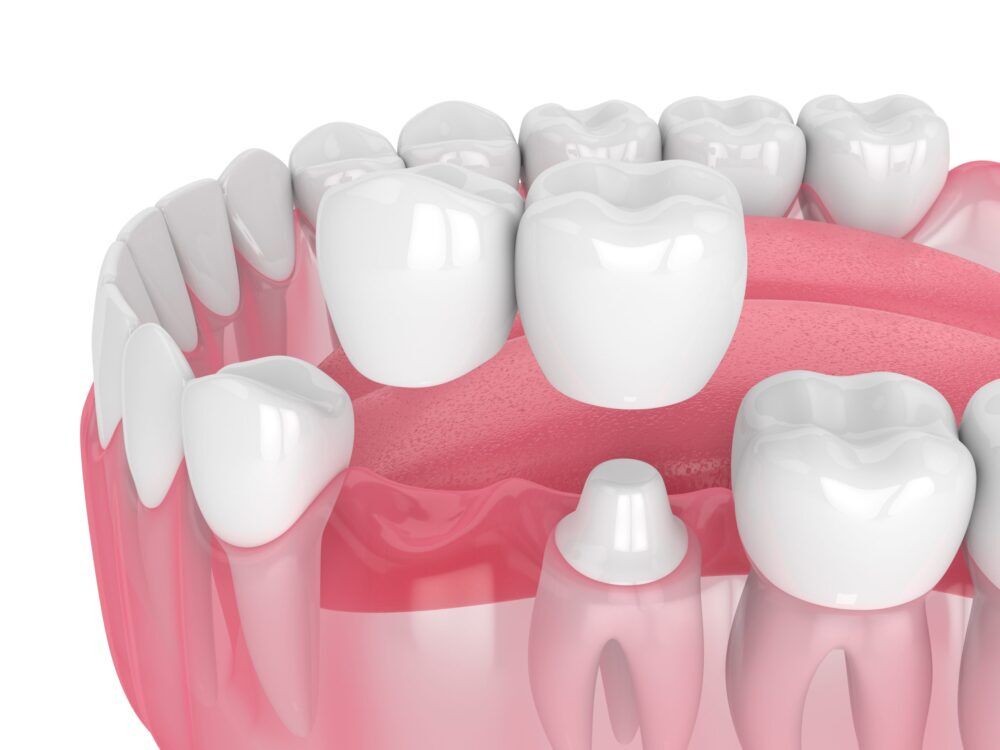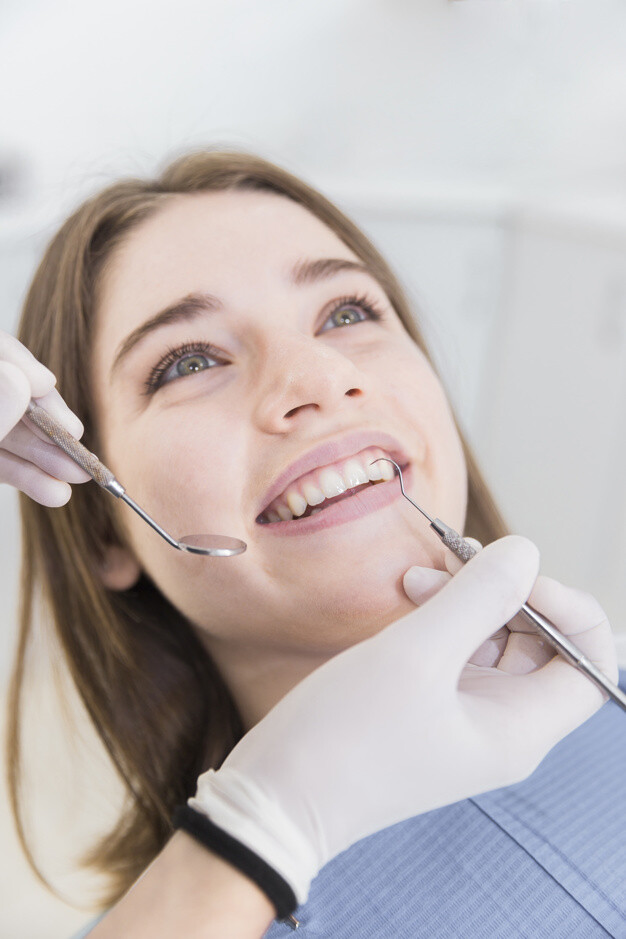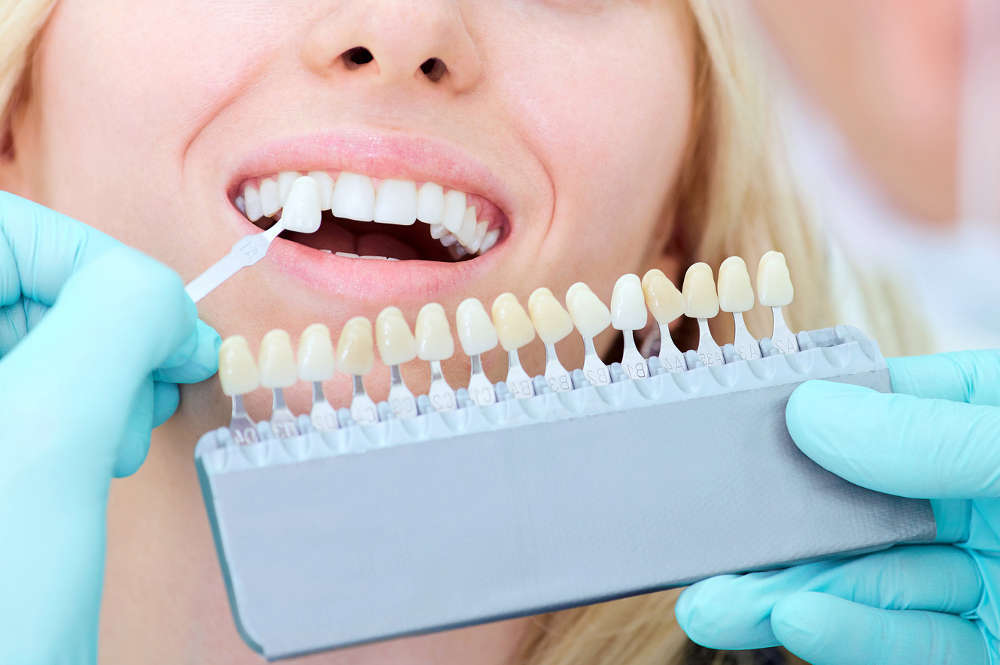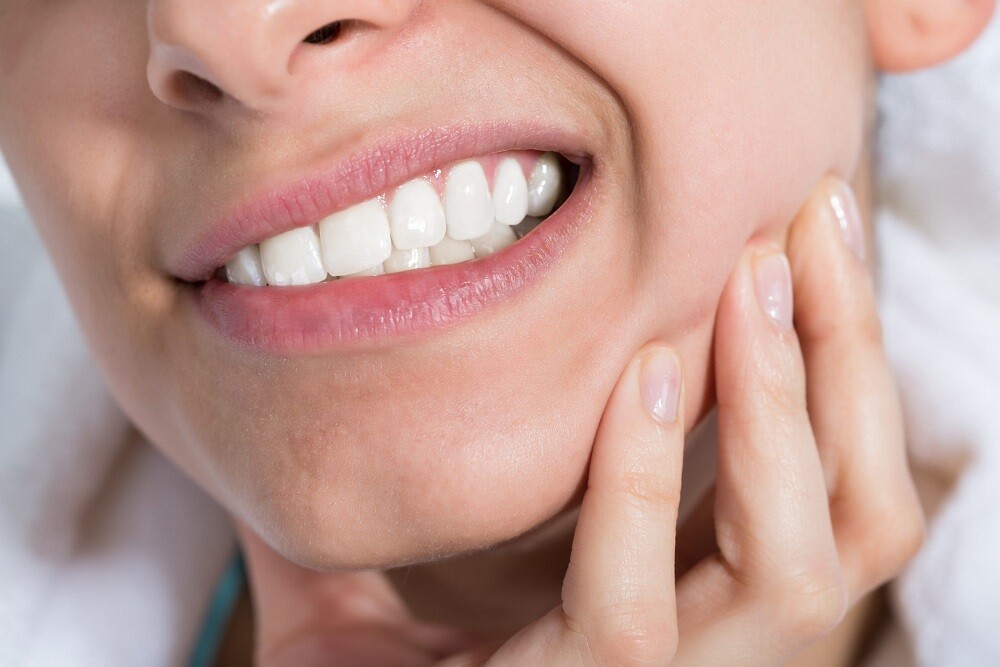General Dentistry in West Ealing
Preventive care and oral hygiene
Preventive dentistry is the modern way of reducing the amount of dental treatment needed to maintain a healthy and happy mouth. It helps you to keep and maintain your teeth. The two major causes of tooth loss are decay and gum disease. The better we prevent or deal with these two problems the more chance people have of keeping their teeth for life. Healthy teeth and gums are the foundations of a confident, fresh, and beautiful smile, which is why we have such a strong focus on helping you achieve, maintain, and keep a healthy mouth.
Dr Dariush and his team will first assess your teeth and gums, also a soft tissue examination will be carried out, to assess that the soft tissues of the mouth are all healthy and discuss with you any treatment you need. The main aim is to help you get your mouth really healthy and to try and prevent any dental problems from reoccurring. In a healthy mouth, it is unlikely that decay or gum disease will continue to be a problem. A thorough ‘scale and polish will be carried out if to help maintain healthy gums and you will also be advised of which oral care products would best suit you.
Dental Hygiene
At the Stunning Smile Clinic, we believe that the baseline for a great smile is a great dental hygiene regime. Dr Dariush Hoshyar dentist, helps all our patients maintain healthy teeth and gums.
Dental Hygiene is not all about brushing your teeth at least twice a day. Plaque and bacteria are at work 24 hours a day, even after flossing and using a mouthwash.
Having a good dental hygiene regime definitely helps maintain a great smile and prevents visits to the dentist to treat fillings, cavities, and gum disease.
Gum disease happens when plaque builds up around teeth that aren’t cleaned properly. This is more likely to happen if you find it difficult to clean your teeth well, for example, if you wear braces or dentures, or have irregularities in your teeth that you can’t reach with a toothbrush or dental floss.
There are other factors that can make you more likely to get gum disease, for example, if you smoke or have diabetes. You may also be more likely to get gingivitis during hormonal changes, such as during pregnancy or puberty.
If you want to prevent gum disease, apart from brushing and flossing twice a day we recommend you see our dentist twice a year for at least 30 minutes each time.
Should I see a hygienist?
If you experience any of the symptoms below, we recommend you to book an appointment to have a hygiene appointment carried out:
- Redness and swelling of the gums
- Bad breath
- Irritation of the gums
- Tender gums
- Sores in the mouth
- Tartar
Tooth-coloured fillings
Fillings are used to restore decayed and damaged teeth and prevent further deterioration requiring root canal treatment. Tooth coloured or white fillings can be used as an alternative to silver amalgam fillings to maintain the natural colouring of your tooth.
These can be provided as one stage “direct fillings” or two-stage “indirect” Inlays/Onlays depending on the desired result.
Benefits:
- Prevents further tooth decay and damage
- Maintains the natural appearance of your teeth
Protect your teeth by planning for your routine examinations and hygiene visits and make treatment more affordable by spreading payment throughout the year.

Crowns
Crowns (or caps) are hand-made coverings designed to fit over teeth if they are misshapen, discoloured, or have been weakened by damage or a large filling. A crown will restore the strength of a tooth and give it the shape and colour of your natural teeth.
A crown may be recommended if:
- You want to improve the appearance of a tooth
- Your tooth is weakened by a very large filling
- You have a discoloured filling
- Your tooth is damaged
- You have a root treated tooth which requires crown protection
- You have a bridge or denture which needs to be held in place
Crowns can be made of metal or covered with porcelain for a more natural look. Stunning Smile Clinic provides full porcelain crowns for a completely natural look, with the end result being virtually indistinguishable from a real tooth, the crown can be hand-made, wholly from porcelain.
Crowns can also be used to improve the appearance of misshapen or discoloured teeth.
FAQ
Crowns are made from various materials depending on the clinical diagnosis and personal preferences. Your dentist will recommend the most appropriate material.
The most popular are:
Porcelain, bonded to precious metal: this is used for most crowns, consisting of a precious metal base with layers of porcelain bonded on top.
Pure porcelain: this is used for metal-free crowns giving them a more natural appearance.
Porcelain and composite resins: these are new materials used for metal-free crowns giving them improved wear and strength.
Solid precious metal (gold and palladium): these are very strong and hard-wearing and are mainly used at the back of the mouth where they can’t be seen.
Your dentist can now fit pure porcelain crowns on both the front and back teeth. These have the translucency and beauty of natural teeth with the inner strength of the latest generation porcelain. By substituting the gold core with porcelain, dental technicians are able to exercise a greater degree of artistry to create crowns that have no dark margins, making them virtually indistinguishable from natural teeth.
It normally takes two appointments. The first is for preparing the tooth, taking the impressions, recording the shade of your teeth, and fitting a temporary crown. The second appointment is for cementing the permanent crown.
No. A local anaesthetic is used and the preparation should feel no different from a filling. If a tooth does not have a nerve following root canal treatment, then a local anaesthetic may not be needed.
Your dentist will match the crown as closely as possible to the other teeth, in size, shape and colour. This should ensure that it fits comfortably and looks natural.
The crown itself cannot decay, but decay can start where the edge of the crown joins the tooth. It is therefore important to clean this area thoroughly as you would with your natural teeth. Your crown will last longer if you look after it well.
Preparation time will vary depending on the condition of the damaged tooth. The tooth will be reshaped, to ensure that once the crown is fitted, it remains the same size and shape as the natural teeth. It may also need to be built up with a filling first. A local anaesthetic is usually given prior to preparation, to avoid any discomfort. After preparation, an impression is taken of the tooth to be crowned and nearby teeth, using a soft mouldable material. This impression is given to a dental technician, who uses it to build your crown to the exact size and shape required. This will ensure that the crown fits comfortably. When using porcelain crowns, the colour will also be matched to the natural teeth.
Whilst the crown is being made, a temporary crown will be fitted. This will not be as strong as the final crown, but can still be chewed upon. Once the crown is ready, it will be tried in place and small adjustments made to ensure a comfortable bite is maintained. Once you and your dentist are happy, the crown is cemented in place. Crowns are sometimes held in place with a small peg in your root canal if there is a lot of the original tooth missing.
The crown can last for many years if good oral hygiene is maintained, depending on the condition of the original tooth. Additional care should be taken to keep the crown and surrounding area clean. Your dentist or dental hygienist will recommend an appropriate home care regime.
Bridges
Bridges offer a permanent, fixed replacement for one or more missing teeth. The teeth either side of the gap are prepared by your dentist and the replacement teeth are bonded to these teeth to ‘bridge the gap’.
Using a bridge helps prevent the remaining teeth from drifting out of position if an empty space is left uncorrected which can cause bite problems and some discomfort.
Basic bridges are made of metal. For a more natural look, the metal can be covered in a thin layer of porcelain which gives a tooth-like appearance to the bridge. Alternatively, the bridge can be hand-made by a skilled dental technician, wholly from porcelain, with the end result being virtually indistinguishable from the real thing.

FAQ
A bridge is used to replace one or several missing teeth. It is usually constructed by fitting crowns (caps) to the teeth on either side of the gap, thereby bridging it.
A bridge not only replaces missing teeth, but it also supports the adjacent teeth. If a gap is left, it can be unsightly and the teeth on either side can tip into it over time, causing problems with the bite and even gum disease. Whilst dentures can be used to replace missing teeth, bridges are usually a much better option since dentures can hasten the loss of the remaining natural teeth and you have to remove them at night.
A bridge may be recommended if:
You have lost one or more teeth at the front or back of the mouth and there are adjacent teeth to support a bridge
You are having an implant and a bridge is needed between the implant and a tooth for stability
Yes; once a bridge is fitted it is difficult to distinguish it from natural teeth and it will usually improve your smile. The dentist will record the colour and translucency of the teeth next to the gap and the colour of the bridge is made to match. Modern porcelains can be incredibly beautiful, life-like and long-lasting.
A bridge can last many years provided it is properly looked after. Good dental hygiene is essential to prolong its life. You should brush and floss the bridge as normal, although you may need to use a special brush or floss to clean under it. The dentist will show you the most effective home care techniques. Regular check-ups with the dentist and are essential to maintain the health of your teeth and gums.
More and more people are having implants. This is because implants avoid the necessity to crown healthy teeth, in a situation where your adjacent teeth are in good condition an implant may be the best option. Your dentist will advise you whether a bridge or implant is the treatment of choice.
Bridges are usually used where there are fewer teeth to replace, or when the missing teeth are only on one side of the mouth. An impression is taken of the mouth, using a soft mouldable material. This impression is used to build exact plaster models of the upper and lower teeth and gums, which demonstrates how the teeth bite together.
Your teeth that will support the bridge are then prepared to take the fixings and to ensure that the bridge is not too bulky. A second impression is then taken of the teeth and any gaps. This is used to build the bridge to the exact size, shape and colour required.
Whilst the bridge is being made, a temporary plastic bridge or crown may be fitted. When the bridge is ready, it will be fitted and small adjustments made to ensure a comfortable bite is maintained before it is fixed in place.
Following the fitting, additional and regular oral hygiene care is required. If it is kept clean and providing there is no accidental damage, a bridge can last for many years. Your dentist will recommend an appropriate home care regime.
Partial & Full Dentures
At Stunning Smile Clinic, we can help you regain your smile with our quick and efficient denture service.
If you have lost any of your natural teeth over time dentures can replace your missing teeth and help regain your smile again. Replacing missing teeth will benefit your appearance and your health. Without support from the denture, facial muscles sag, making a person look older. You’ll be able to eat and speak – things that people often take for granted until their natural teeth are lost.
There are various types of dentures that can be offered to you. A conventional full denture is made from acrylic or chrome cobalt and used to replace missing teeth in your mouth. A full denture is used when no natural teeth are present in the upper or lower jaw. A partial denture is used to replace one or more missing natural teeth also.
Even if you wear full dentures, you still must take good care of your mouth. Brush your gums, tongue, and palate every morning with a soft-bristled brush before you insert your dentures to stimulate circulation in your tissues and help remove plaque.
Types of Dentures:
- Metal Dentures
- Acrylic Dentures
- Immediate Dentures
Impacted Wisdom Teeth
The wisdom teeth, or third molars, grow at the back of your gums and are the last teeth to come through. Most people have four wisdom teeth, one in each corner.
Due to the lack of space, the wisdom teeth can sometimes emerge at an angle or get stuck and only emerge partially. Wisdom teeth that grow through in this way are known as impacted. At our West Ealing dental practice, we can remove impacted wisdom teeth getting you out of pain in one appointment. If your wisdom tooth is infected, Dr Dariush Hoshyar needs to treat the infection with antibiotics prior to attempting the removal of the wisdom tooth.
There are different types of impacted wisdom teeth, depending on the way the tooth has grown through:
- Mesial impaction – where the tooth grows at an angle facing towards the front of the mouth.
- Vertical impaction – where the tooth is straight but can’t break through the gums properly because it’s stuck against the tooth next to it.
- Horizontal impaction – where the tooth grows horizontally.
- Distal impaction – where the wisdom tooth grows away from the tooth next to it and becomes lodged in that position.
The removal procedure – Dr Dariush Hoshyar will take an X-ray of your wisdom teeth to help determine whether or not they need to be removed. If they do, the dentist may be able to carry out the procedure or they may refer you to an oral surgeon.
After your wisdom teeth have been removed, you may experience some swelling and discomfort, both on the inside and outside of your mouth. This is usually worse for the first three days but it can last for up to two weeks.
Your jaw may be stiff and sore and your face may be bruised. The bruising will begin to disappear, although it may take about two weeks to fade completely.
Anesthesia – Before having your wisdom teeth removed, you’ll be given local anesthetic by injection to numb the tooth and surrounding area.
If you’re particularly anxious about the procedure, Dr Simon Azimi may give you a sedative to help you relax. This may come in the form of a tablet (diazepam or temazepam). A numbing gel may also be rubbed into the area to be injected.
General anesthetic (where you’re put to sleep) is rarely needed. When wisdom tooth removal under general anesthetic is needed, it is done in the hospital.
Removing the wisdom tooth – If the tooth hasn’t come through the gum, a small incision will be made in the gum to access it. A small piece of the bone covering the tooth may need to be removed.
The tooth may be broken into smaller parts to make it easier to extract through the opening. If the tooth has partially or fully broken through the gum, it will be easier to remove because there’s less need to make an incision.
You’ll feel some pressure just before the tooth is removed. This is because Dr. Simon Azimi needs to widen the tooth socket by rocking the tooth back and forth before taking it out.
Surgery to remove wisdom teeth shouldn’t be painful because the area will be numb before the operation begins. However, if you begin to feel some pain during the procedure, tell your dentist so that they can give you more anesthetic.
After surgery – If an incision has been made, it may be necessary to use dissolving stitches to seal the gum. Your dentist will tell you if this has been done and how long the stitches will take to dissolve (usually 7 to 10 days).
Dr Dariush Hoshyar may place some gauze over the site of the extraction and ask you to keep the pressure on it by biting your jaws together for up to an hour. This is to allow a blood clot to form in the empty tooth socket. Blood clots are part of the healing process, so try not to dislodge them.
For the 24 hours after removing your wisdom tooth, your dentist will advise you to avoid:
- Rinsing your mouth out with liquid
- Smoking and drinking alcohol
- Drinking hot liquids, such as tea or soup
- Lots of physical activity





